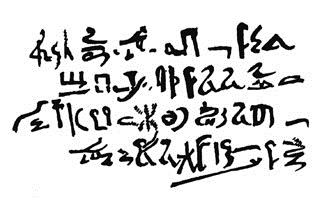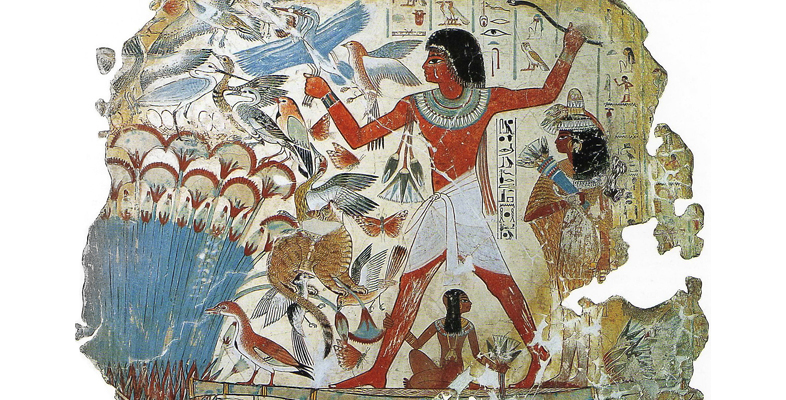6.1 Tomb graffiti
The decorated tomb-chapel, therefore, was a liminal space, a crucial threshold between the world of the living and the world of the dead. Its public rooms formed the chapel in which family members and other visitors could continue to perform ceremonies and remembrances for the deceased, to assist him on his journey towards eternity.
That there was an important aesthetic dimension to this role is clear from surviving ancient evidence of viewers’ responses, which have been preserved in the form of graffiti. The beauty and accomplishment of the decorations played a significant role in eliciting the desired responses.
You can read four of these now. They are Eighteenth Dynasty graffiti on the walls of a tomb-chapel that was already 400 years old at the time of the inscription (Figure 23). It belonged to a relative of the Vizier Intefiqer.

The scribe Im[....son of ...] came to see this tomb [of Sobekneferu] With
friend Hotep...
The scribe Bak
To see tomb the time of Sobekneferu. He found it like heaven in its interior.[…with the sun shining in it; And he said 'May heaven rain fresh myrrh And sprinkle incense Upon this temple of that Khufu, true of voice'.]
The scribe Djehuti, true of voice, came To see this tomb of the time of Kheperkare – may he live for all Time.
The scribe Amenemhat, Son of the Elder of the Portal Djehutimes, Who was born of Intef, came To see [this] tomb [of the Lord Vizier] Intefiqer. It was pleasant to his heart…[…a monument(?)] which exists, Excellent for all time. His name shall exist [for eternity…] […with] offerings in it, Saying: 'An offering which the king gives to Osiris [Foremost of the Westerners] [and Amen-Ra], and the gods who are lords of the necropolis: Invocation offerings of bread and beer, Flesh and fowl, Alabaster and linen, Incense and unguent, All the goodly pure things, Which heaven gives, and earth creates, And the inundation brings, as his offering To the spirit of Intefiqer, true of voice!'
